2013-12-16 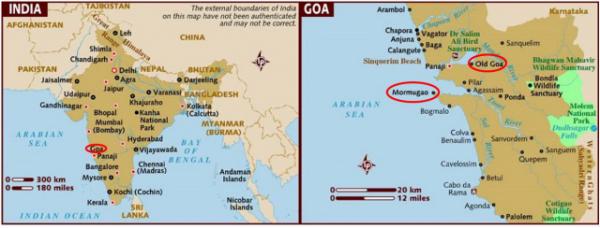
【Aiden in English】
We sailed from Mumbai to Mormugao off the western coast of the Arabian Sea. Mom and I would tour the town of Old Goa, where the Portuguese colonized and once lived as the former capital of the Portuguese Indies from the 16th to the 18th centuries. In ancient times, Goa was a nation of cowherds and was quite overpopulated. The villagers were forced to abandon their homes and escape the plague and malaria in history. We went across the Western Ghats Mountain chain and saw signs of Portuguese influence. Some houses had balconies that overlooked the gardens, streets, and the town. Most of the homes were furnished with fancy, stylish porches. Beautiful church architecture is found in many places after the Portuguese introduced Christianity. Today, we visited two crucial churches out of many more. Those churches and the Western Ghats are listed as UNESCO World Heritage Sites. The first church, the Basilica of Bom Jesus, was more famous than the other. It was built from black laterite stone, with marble and inlaid precious stones, and is the finest example of Baroque architecture in India. However, the most important thing was to hold the body of the patron saint of Goa, Francis Xavier, who taught people about evangelism. On the journey to China from India, St. Francis Xavier felt sick and passed away. The captain decided to bury him locally. Half a year later, his body was still in the condition it was when the captain dug it out and wanted to carry it back to Goa. The very salty and dry weather helped preserve the body well. Eventually, the captain moved his body back to India and buried it in this church. Years later, the scientists dissected the corpse and accidentally lost all its organs. Now, the body was completely hollow inside but remained in decent shape. I believe this happened because of the good deeds he did in his life. The second church, the Se Cathedral, consisted of a convent surrounded by a vast courtyard with exotic plants, as well as the Church of Our Lady of the Rosary and the Church of St. Caetano, among others. The interior showcased Portuguese columns, pediments, altars, wall paintings, and frescoes. The exterior of the Italian columns, platform, and doorway was another example of Renaissance architecture. This church was larger than any in Portugal. The complex was so big that we only explored a quarter of it. The most striking story to me was that many rich people were buried underneath the church after death. When people came to pray and walked over their tombstone-paved aisles, the rich ones would make it a way of saying that anyone else was better than they were, which released all the sins they had committed in the past. Sometimes, the universe will give you good things if you provide the good stuff. In 1986, the Churches and Convents of Goa were inscribed as a UNESCO World Heritage Site. 【红霞译】
离开孟买“母亲”后,我们继续沿阿拉伯海南行,直到果阿邦“牧牛国”港口城市莫尔穆加奥“三村庄”,我和妈妈打算去果阿老城一趟,游览这座葡萄牙殖民者曾于16~18世纪期间设成驻印首府的古都。据历史记载,果阿邦曾经人口过剩,当地人一度为摆脱鼠疫和疟疾而被迫离乡背井。
我们穿越西高止“宽阔台阶”山脉,一路上昔日葡萄牙殖民遗风犹存,诸如伸出房外可以俯瞰庭院街道马路的阳台、时尚别致的走廊、风格讲究的基督教堂之类的西洋建筑结构屡见不鲜,今天我们重点参观众多教堂中的两个,连同西高止山一起均被联合国教科文组织列入《世界遗产名录》。
第一个是最著名的邦姆“仁慈”耶稣大教堂,其建筑上全部采用当地黑色红土石、大理石和镶嵌宝石材料,风格上号称全印度巴洛克艺术极品,另外这个教堂更因拥有果阿邦守护神弗朗西斯·沙勿略“主保圣人”的遗体而为各地朝圣者心向往之。主保圣人曾为葡萄牙基督传教士,在去中国布道路上不幸病亡,起初船长就地入殓,半年过后当他挖出遗体准备运回果阿邦时,发现整个遗体因高盐干燥有利条件而保存完好,最后得以如愿送回印度并入棺下丧到仁慈耶稣大教堂。过了若干年,科学家们对主保圣人的尸体进行了解剖研究,不知怎么搞的,所有内脏器官竟先后不翼而飞,现存的主保圣人遗体实际上只剩下一具外观尚好的空壳,我觉得这是他生前积德行善的结果。
第二个是果阿邦最大的主教堂,整个建筑群气势浩瀚,包括修道院及其种植了多种奇花异草的庭院,玫瑰圣母教堂、圣卡耶坦“洞穴”教堂等散落在周围不远的地方。教堂内部木梁、山形墙、祭坛、壁画和浮雕等优美地再现了葡萄牙建筑之精华;教堂外表石柱、平台、大门入口处巧妙地借鉴了意大利文艺复兴艺术手法,就其规模大小而论,葡萄牙国内任何一个教堂都无法与大教堂相比,正是基于这个原因,我们这次远道而来也只能参观其中的四分之一。
值得一提的还有,许多富人死后都情愿葬身大教堂下面,当前来祈祷的教徒脚踩由死者墓碑铺成的过道时,死者“内心”释然,因此而了却生前所欠的孽债,以求心地纯净并尽早随主升天。 世间万物就是这样,善待他人就等于善待自己。 1986年,果阿的教堂和修道院被联合国教科文组织纳入《世界遗产名录》。 Today in History(历史上的今天): 2012: 机场文化(Airport Culture) 2009: 梦系新西兰长白云之乡(Land of the Long White Cloud) 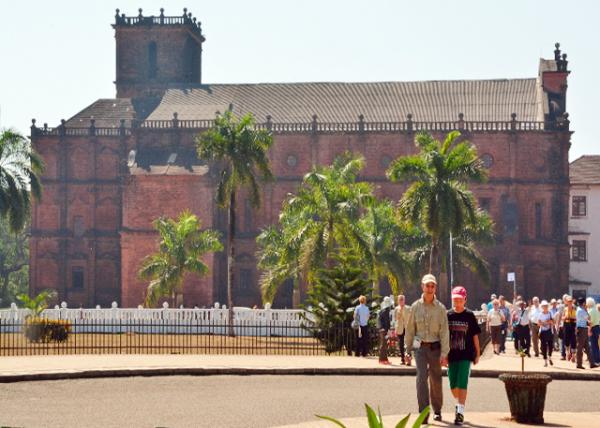 Basilica of Bom Jesus in the Early 17th-Century Baroque & Portuguese Colonial Architecture Basilica of Bom Jesus in the Early 17th-Century Baroque & Portuguese Colonial Architecture
(慈悲耶稣大教堂·17世纪早期巴洛克与葡萄牙殖民时期建筑风格) 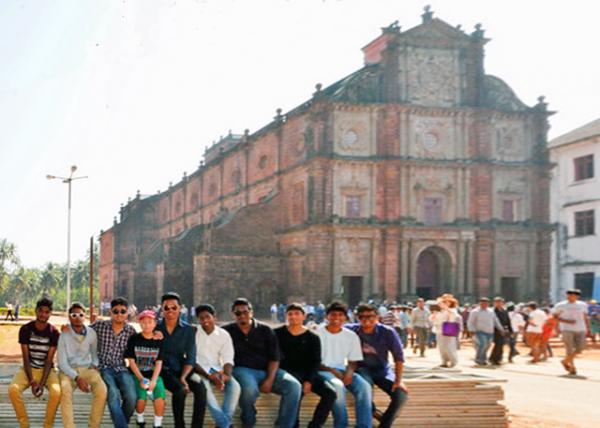 Basilica of Bom Jesus w/ the Friendly & Generous Reception from Locals Basilica of Bom Jesus w/ the Friendly & Generous Reception from Locals
(慈悲耶稣大教堂·受到当地人友好慷慨的接待 12-16-2013) 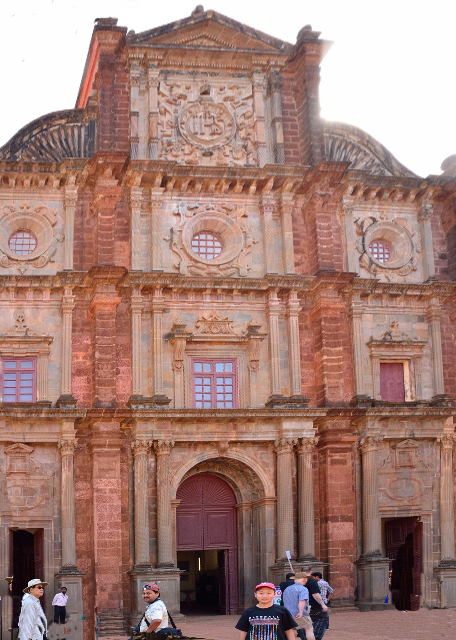
Façade @ Basilica of Bom Jesus in the Late 16th-Century Baroque & Portuguese Colonial Architecture (慈悲耶稣大教堂正面观·建于16世纪晚期巴洛克—葡萄牙殖民时期建筑风格 12-16-2013)
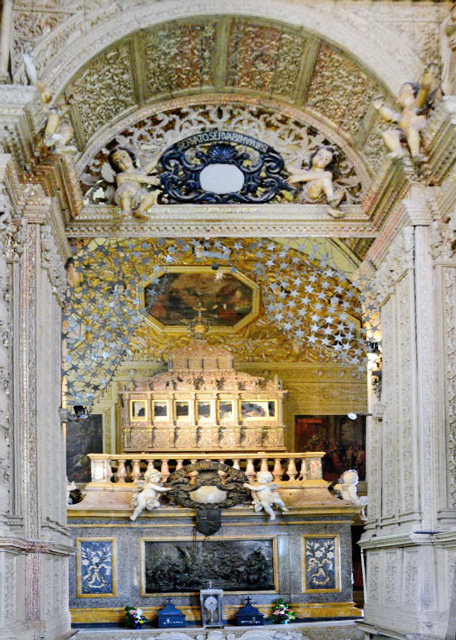
Relics of St. Francis Xavier @ Basilica of Bom Jesus (慈悲耶稣大教堂·主保圣人遗物) 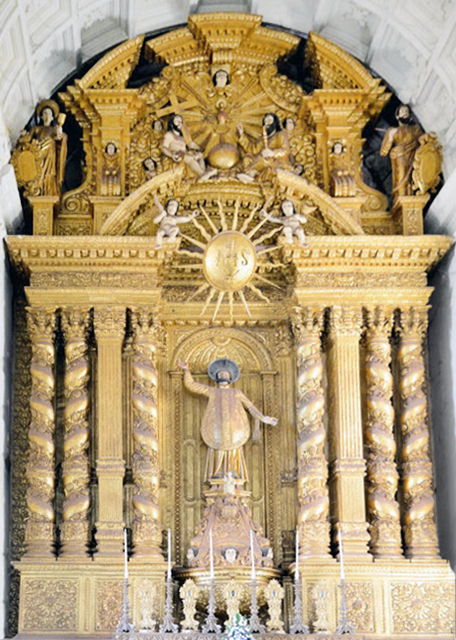
Basilica of Bom Jesus in the Baroque-style Main Altar, Gilded & Bearing the Statue of Ignatius of Loyola Standing Between Solomonic Pillars, under the Name of Jesus in the IHS Monogram & the Holy Trinity. (慈悲耶稣大教堂·镀金的巴洛克式主祭坛,在智者柱之间立着耶稣会创始人雕像,上面为象征基督的耶稣名字和三位一体) 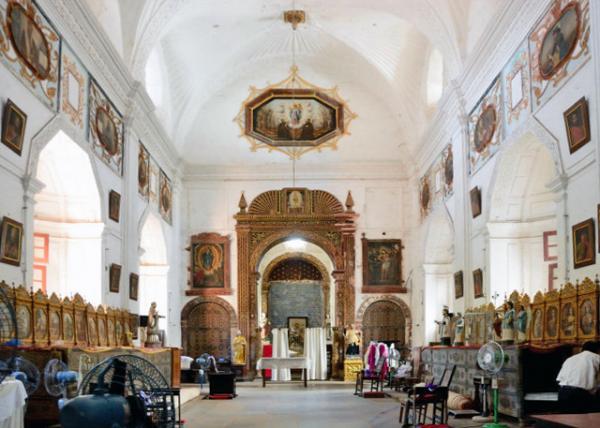 Icon Gallery @ Basilica of Bom Jesus Icon Gallery @ Basilica of Bom Jesus
(慈悲耶稣大教堂·圣像博物馆) 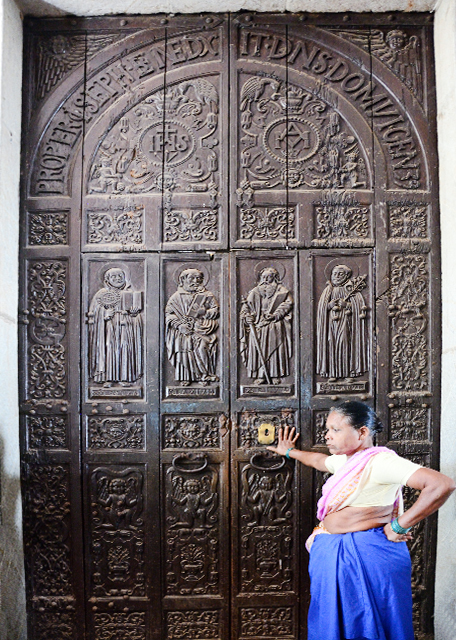
Carved Door of the Basilica of Bom Jesus (慈悲耶稣大教堂·雕花门) 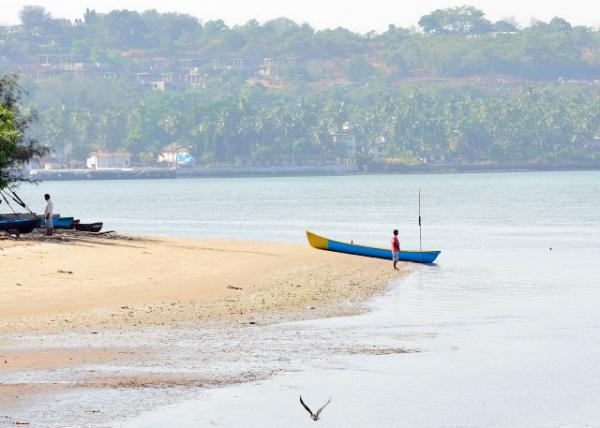 Mandovi Estuary (曼多维“镇静”河口) Mandovi Estuary (曼多维“镇静”河口)
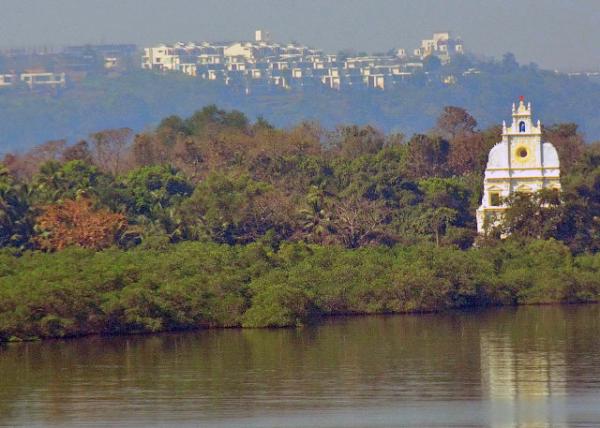
River Mandovi, the Lifeline of Goa (曼多维河·果阿邦的生命线) 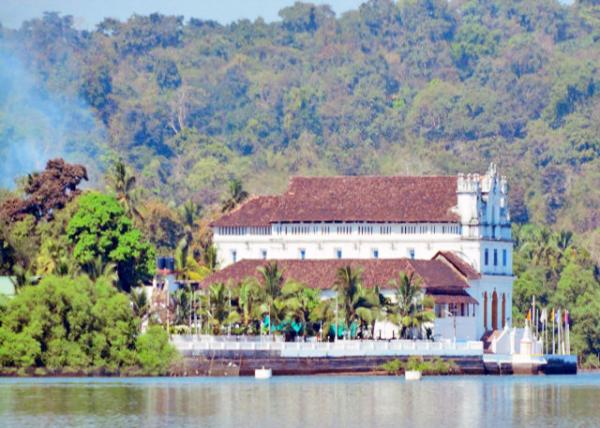 Church of St Francis of Assisi by the River Mandovi Church of St Francis of Assisi by the River Mandovi
(曼多维河岸方济各教堂)
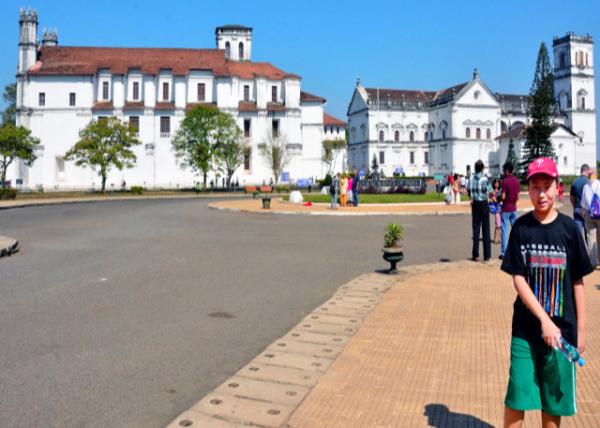 Church & Convent of St. Francis of Assisi Built in 1503 & Witnessed the Colonial Ambitions of the Portuguese in the Subcontinent Church & Convent of St. Francis of Assisi Built in 1503 & Witnessed the Colonial Ambitions of the Portuguese in the Subcontinent
(圣方济各教堂和修道院·建于1503年并见证了葡萄牙人在次大陆的殖民野心 12-16-2013) 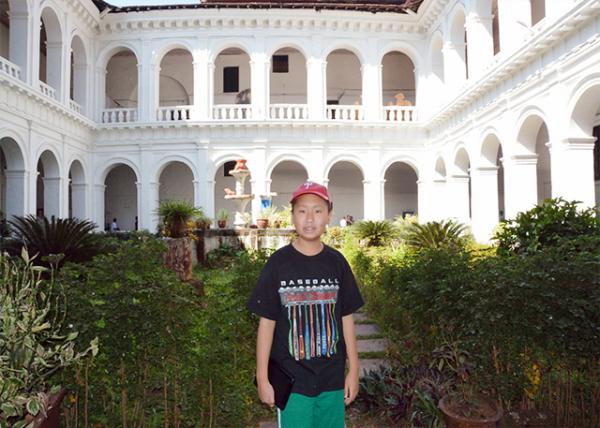 Cloister @ Church & Convent of St. Francis of Assisi Cloister @ Church & Convent of St. Francis of Assisi
(圣方济各教堂和修道院·回廊 12-16-2013) 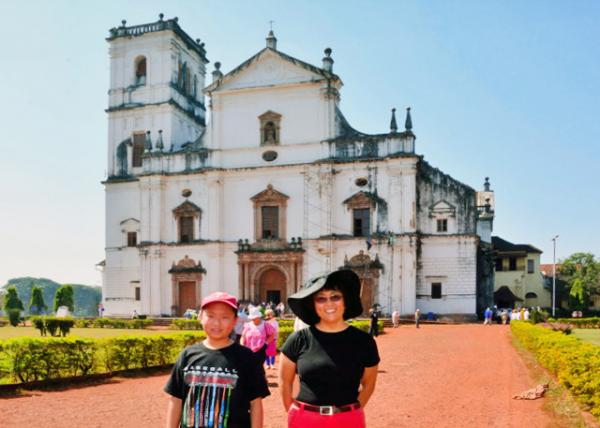 Se Cathedral, a Stunning Blend of Architectural Styles, Including Portuguese-Manueline, Gothic, & Renaissance Elements, w/ a Tuscan Exterior & Corinthian Interior in the Early 16th Century Se Cathedral, a Stunning Blend of Architectural Styles, Including Portuguese-Manueline, Gothic, & Renaissance Elements, w/ a Tuscan Exterior & Corinthian Interior in the Early 16th Century
(主教大教堂·令人惊叹的16世纪早期葡萄牙—曼努埃尔式、哥特式和文艺复兴式元素等建筑风格的融合,外观为托斯卡纳式,内部为科林斯式 12-16-2013) 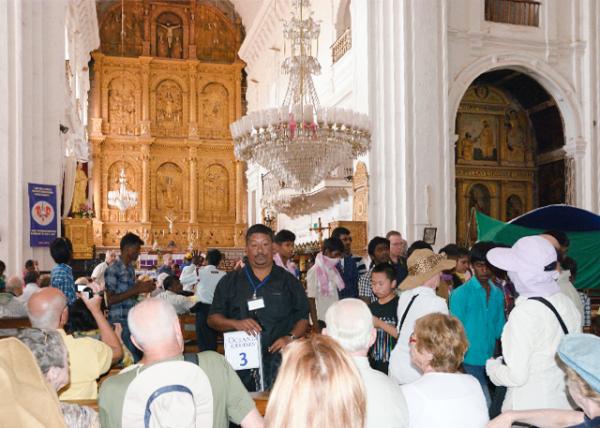 Se Cathedral w/ Rich Interior & Artwork Se Cathedral w/ Rich Interior & Artwork
(主教大教堂·华丽的内部装饰和艺术品 12-16-2013) 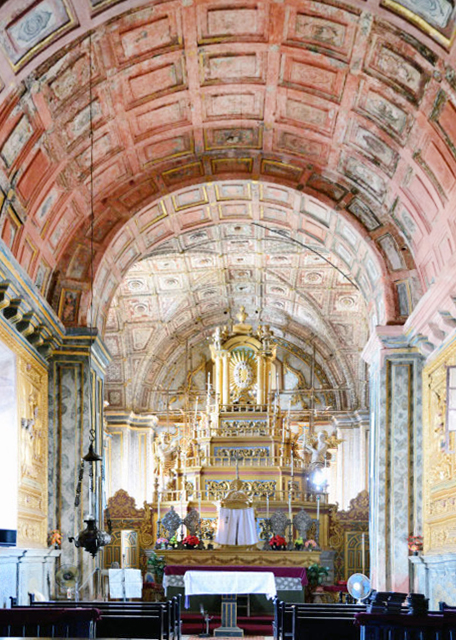
Se Cathedral w/ the Main Altar Depicting Scenes from the Life of St. Catherine of Alexandria & Her Martyrdom (主教大教堂主祭坛·描绘亚历山大“捍卫者”的圣凯瑟琳“纯洁”生平及其殉道场景) 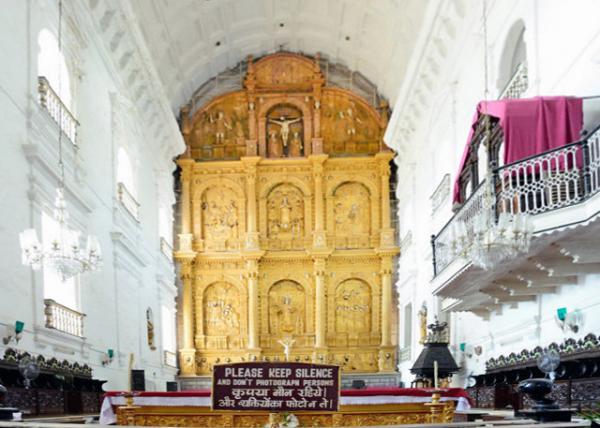 Reredos @ Se Cathedral (主教大教堂·祭坛之上装饰性屏风) Reredos @ Se Cathedral (主教大教堂·祭坛之上装饰性屏风)
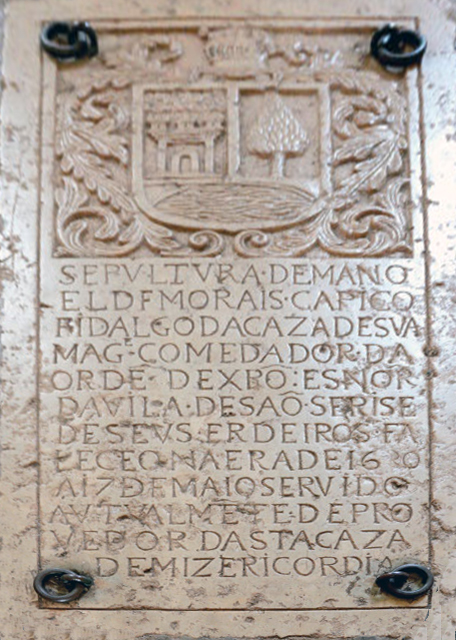
Tombstone-paved Aisle @ Se Cathedral (主教大教堂·墓碑过道) 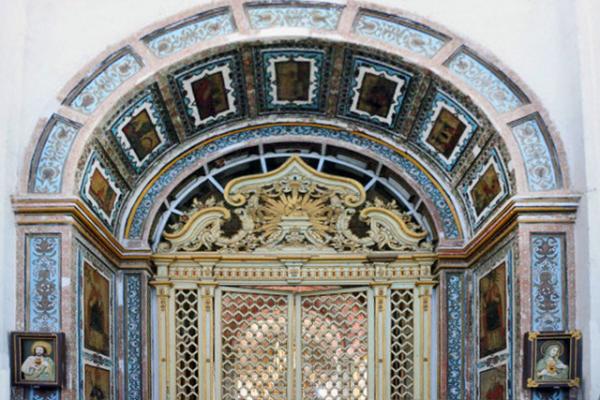 Gilded Chapel Screen @ Se Cathedral Gilded Chapel Screen @ Se Cathedral
(主教大教堂·镀金礼拜堂屏风) 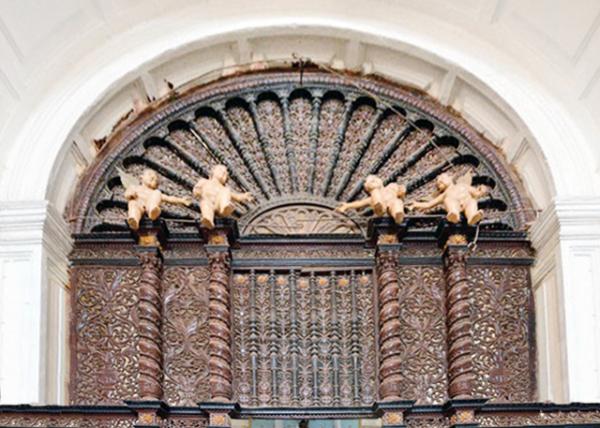 Elaborate Wooden Altar @ Se Cathedral Elaborate Wooden Altar @ Se Cathedral
(主教大教堂·精美的木制祭坛) 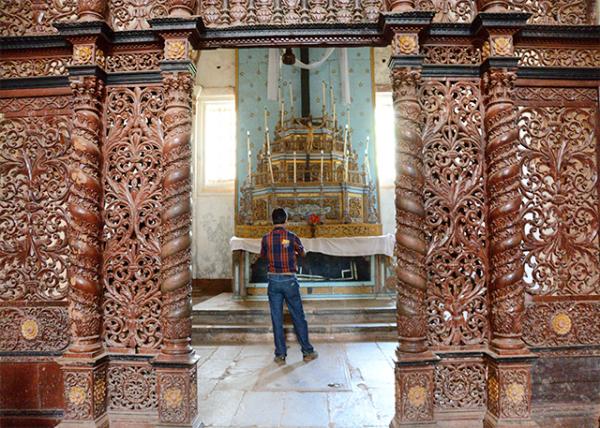 Embellished Wooden Screens of Se Cathedral Embellished Wooden Screens of Se Cathedral
(主教大教堂·奢华的木制隔板) 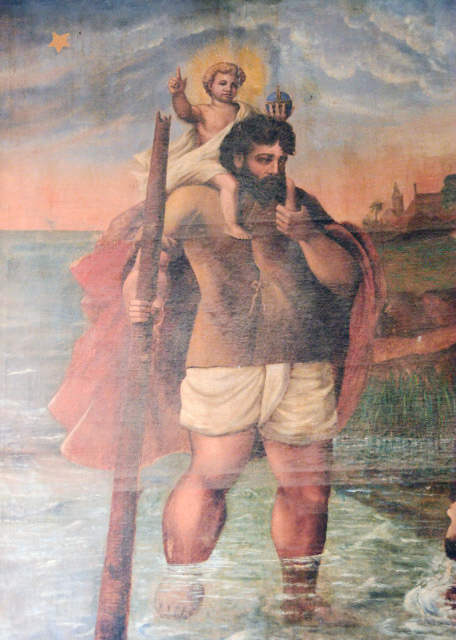
Mural of St. Christopher Carrying the Christ Child @ Se Cathedral (主教大教堂·壁画《圣克里斯托弗“基督的承载者”怀抱圣婴》) 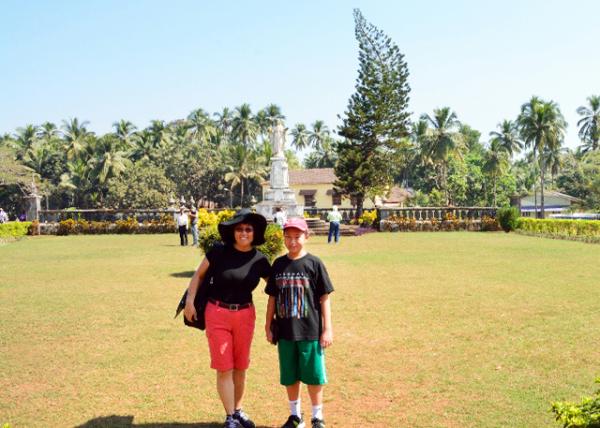 Sculpture of Sacred Heart of Jesus @ the Yard of Se Cathedral Sculpture of Sacred Heart of Jesus @ the Yard of Se Cathedral
(主教大教堂庭院·雕塑《耶稣圣心》12-16-2013)
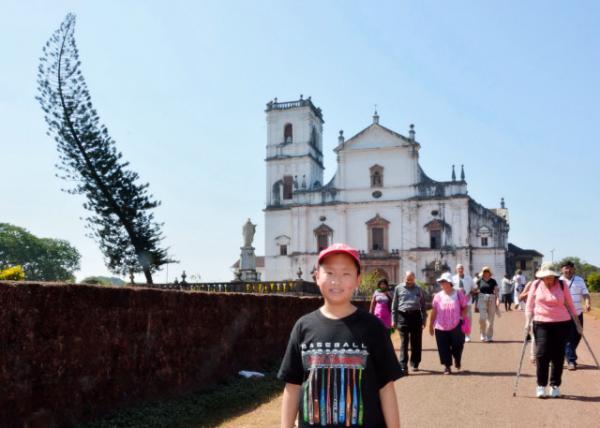 Bendy Tree of Araucaria araucana Symbolic of Growth & Strength in Life's Endeavors outside Sé Catedral de Santa Catarina Bendy Tree of Araucaria araucana Symbolic of Growth & Strength in Life's Endeavors outside Sé Catedral de Santa Catarina
(圣卡塔琳娜大教堂的歪脖子·猴谜树象征着生命中成长和力量的提升 12-16-2013)
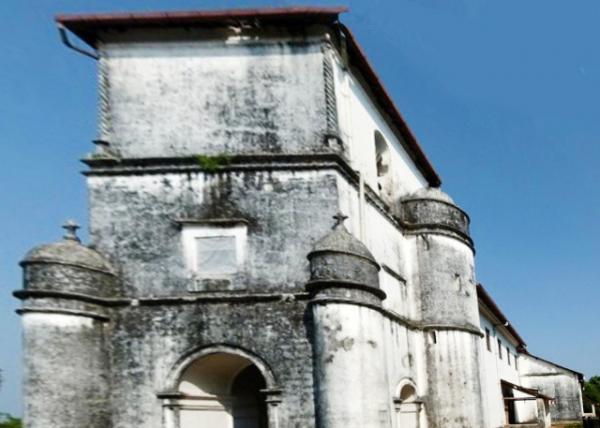 Church of Our Lady of the Rosary in the Mid 16th-Century Renaissance, Manueline, & Gothic Architecture Church of Our Lady of the Rosary in the Mid 16th-Century Renaissance, Manueline, & Gothic Architecture
(玫瑰圣母教堂·16世纪中期文艺复兴、哥特和曼努埃尔“葡萄牙晚期哥特”式风格) 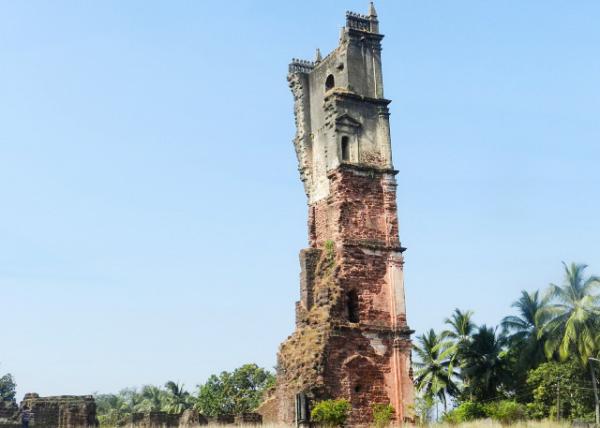 Ruins of the Bell Tower @ Church of St. Augustine Ruins of the Bell Tower @ Church of St. Augustine
(圣奥古斯丁“高贵”教堂·钟楼废墟) 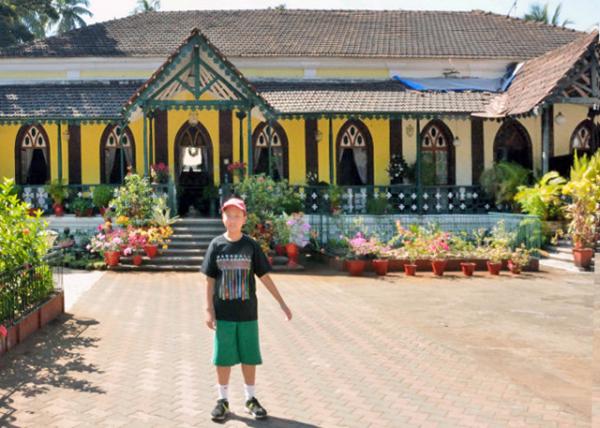 Casa Oliveira Fernandes, 250-Year-Old Indo Portuguese Home Casa Oliveira Fernandes, 250-Year-Old Indo Portuguese Home
(奥利维拉·费尔南德斯“橄榄树·勇敢之子”别墅——拥有250年历史的印度葡萄牙式住宅 12-16-2013) 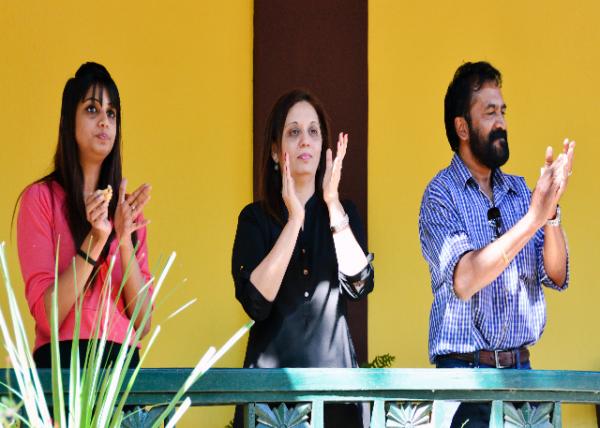 Hosts of Casa Oliveira Fernandes, Currently Inhabited by the 7th Generation of the Oliveira Fernandes Family Hosts of Casa Oliveira Fernandes, Currently Inhabited by the 7th Generation of the Oliveira Fernandes Family
(奥利维拉·费尔南德斯别墅——现由其家族第七代成员居住) 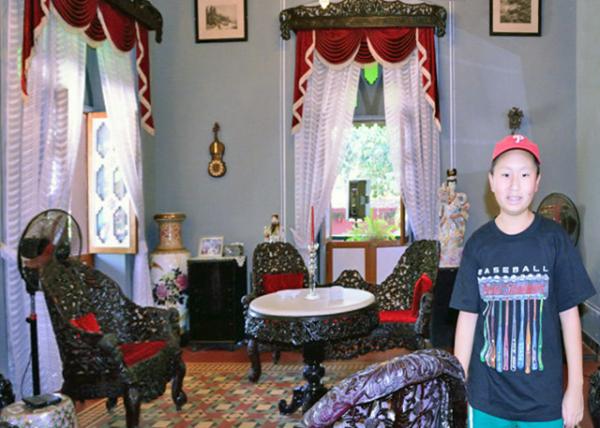 A Myriad of Antiques, Curios, & Vintage Furniture @ Casa Oliveira Fernandes A Myriad of Antiques, Curios, & Vintage Furniture @ Casa Oliveira Fernandes
(奥利维拉·费尔南德斯别墅——各种古董、古玩和老式家具 12-16-2013) 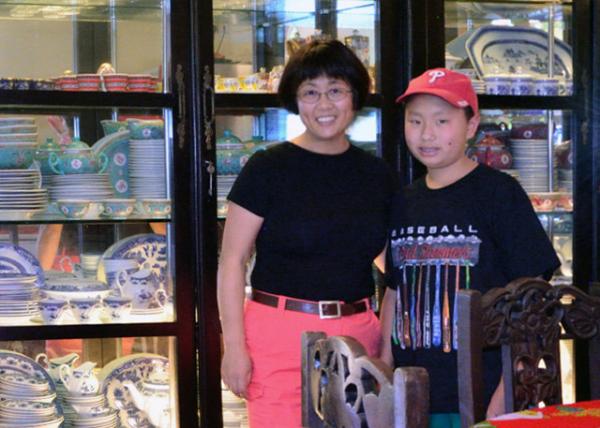 Blue and White Porcelain Collection @ Casa Oliveira Fernandes Blue and White Porcelain Collection @ Casa Oliveira Fernandes
(奥利维拉·费尔南德斯别墅——青花瓷收藏 12-16-2013) 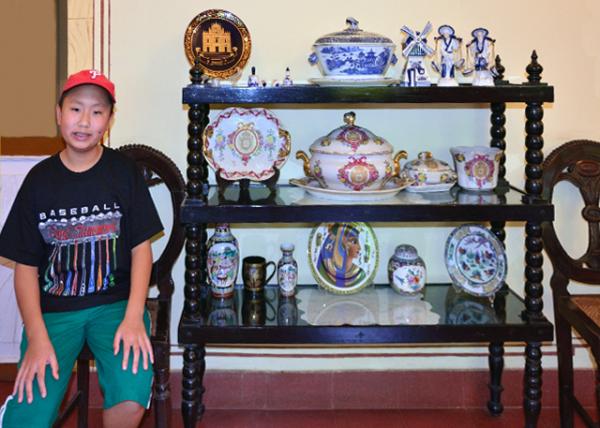 Rockingham Potteries @ Casa Oliveira Fernandes Rockingham Potteries @ Casa Oliveira Fernandes
(奥利维拉·费尔南德斯别墅——罗金厄姆“岩石村庄”陶器 12-16-2013) 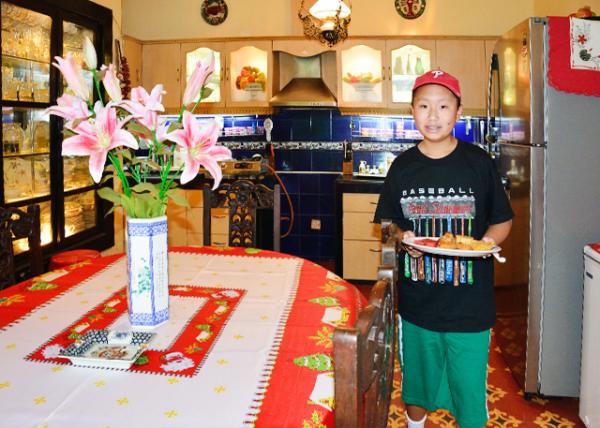 Lunch @ Casa Oliveira Fernandes Lunch @ Casa Oliveira Fernandes
(奥利维拉·费尔南德斯别墅——午餐 12-16-2013) 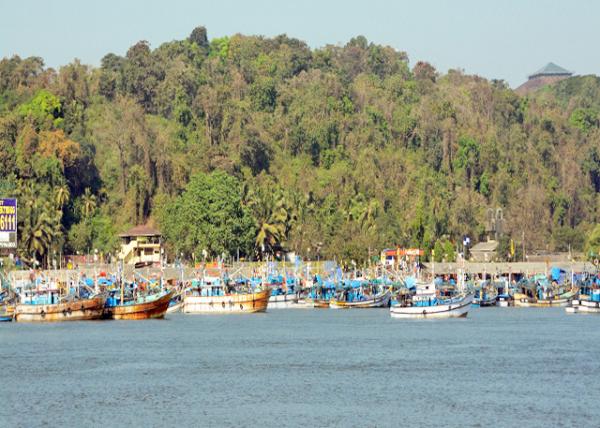 Fishing Boats @ Betim (贝廷的渔船) Fishing Boats @ Betim (贝廷的渔船)
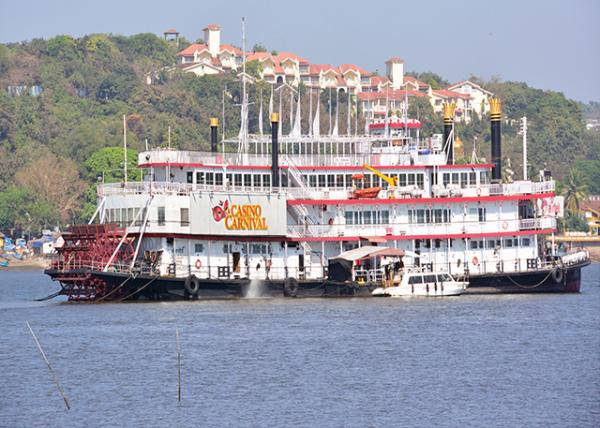 Carnival Casino Goa, the Only Semi-Legal in the “Offshore Zone” on the Mandovi River, Flowing next to Panaji,the Capital of Goa Carnival Casino Goa, the Only Semi-Legal in the “Offshore Zone” on the Mandovi River, Flowing next to Panaji,the Capital of Goa
(果阿嘉年华赌场·游弋在果阿邦首府帕纳吉“船溪”曼多维河“近海区”唯一半合法区域上的赌场) 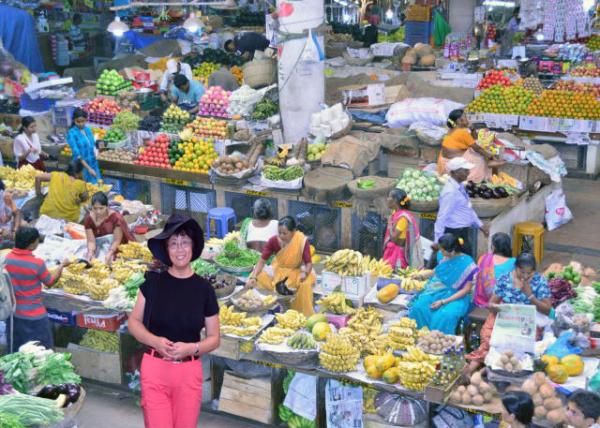 Fruit-Veggie Market in Panaji Fruit-Veggie Market in Panaji
(帕纳吉·果蔬市场 12-16-2013) 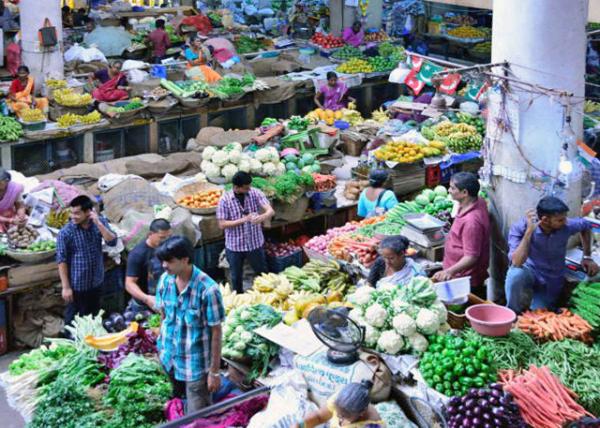 Fruit-Veggie Market in Panaji (帕纳吉·果蔬市场) Fruit-Veggie Market in Panaji (帕纳吉·果蔬市场)
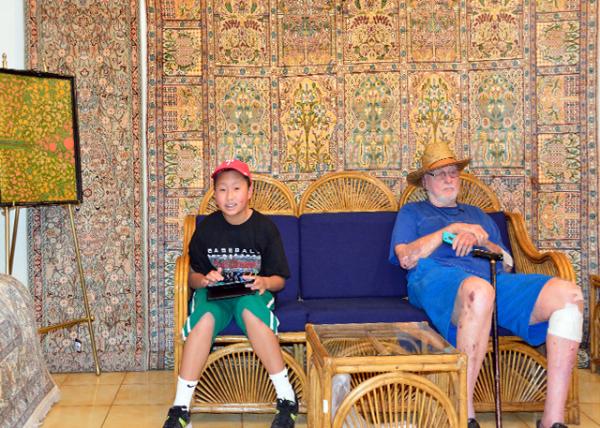 Indian Hand-Knotted Rug in Silk & Cotton w All on a Quilted Cotton Ground, Surrounded on 4 Sides by Fringe of Silk & Gilt Thread Indian Hand-Knotted Rug in Silk & Cotton w All on a Quilted Cotton Ground, Surrounded on 4 Sides by Fringe of Silk & Gilt Thread
(印度手工编织丝绸和棉质地毯·全部铺在绗缝棉布地上,四面环绕丝绸和镀金线流苏 12-16-2013) 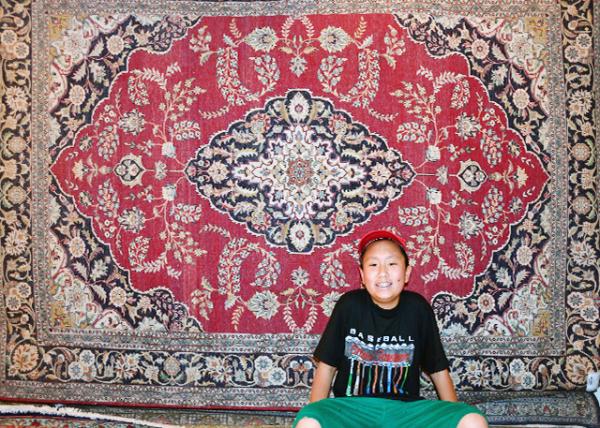 Portuguese Goa Carpet Embroidered in Shaded Satin & Polychrome Silk Threads, Highlighted in Silver & Gold Couched Laid Work, Lined Portuguese Goa Carpet Embroidered in Shaded Satin & Polychrome Silk Threads, Highlighted in Silver & Gold Couched Laid Work, Lined
(葡萄牙果阿地毯·采用渐变缎纹和彩色丝线刺绣,以银色和金色凸起的铺垫工艺制成,带衬里 12-16-2013)
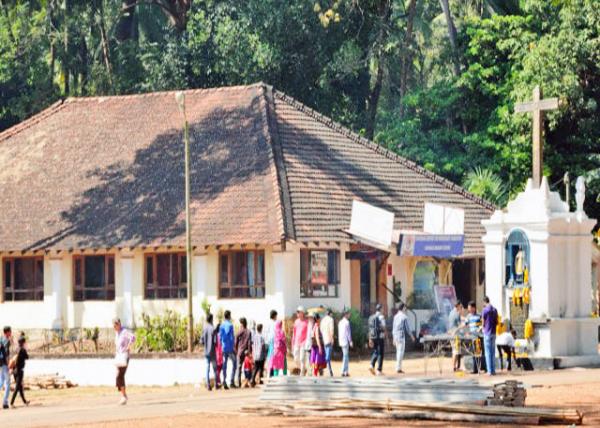 The School (学校) The School (学校)
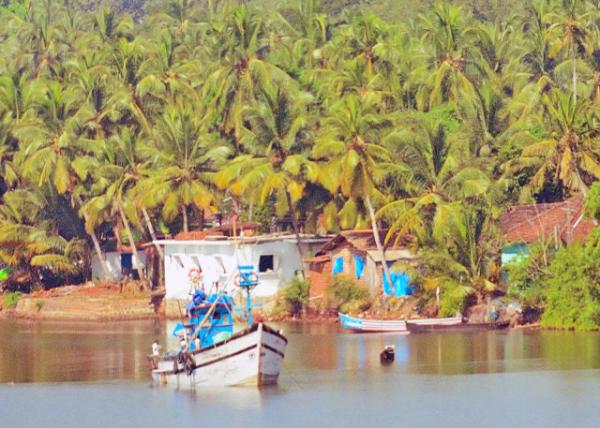 Fishing Village (渔村) Fishing Village (渔村)
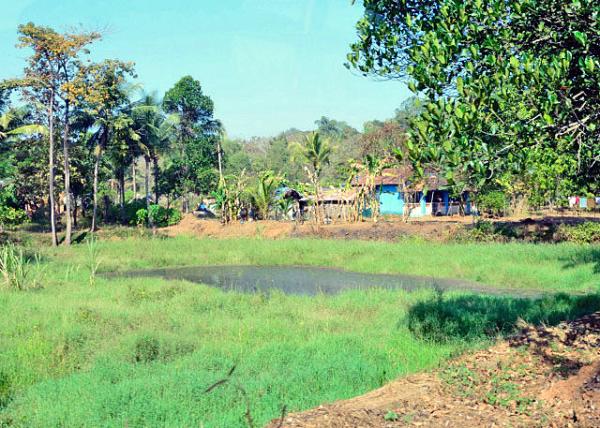 Cashew Plantation (腰果种植园) Cashew Plantation (腰果种植园)
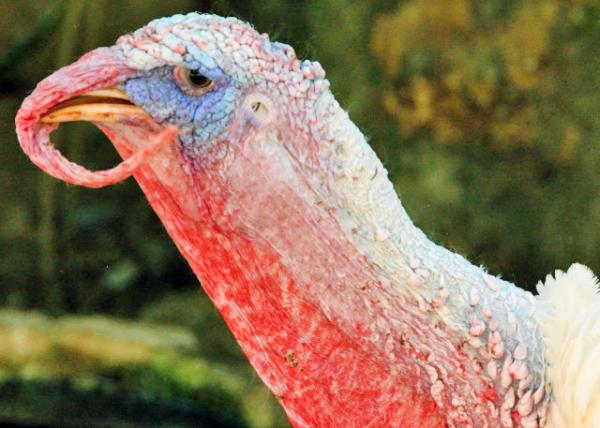 Red-Head Turkey w/ Suspended Nose Red-Head Turkey w/ Suspended Nose
(带有悬浮鼻子的红头火鸡) 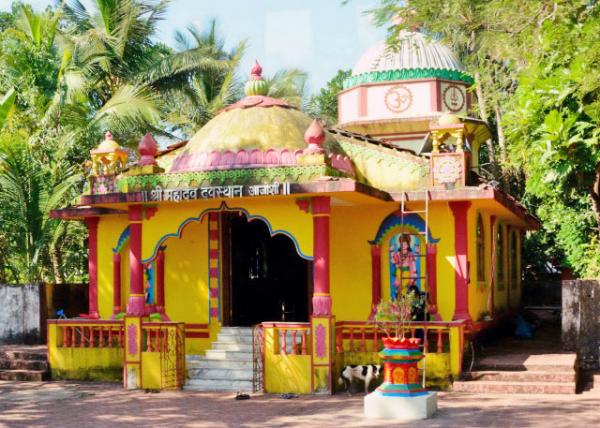 Hindu Temple (印度教寺庙) Hindu Temple (印度教寺庙)
 Auto-rickshaw or Tuk-Tuks in Front of a Temple Auto-rickshaw or Tuk-Tuks in Front of a Temple
(寺庙前的自动人力“嘟嘟”车) 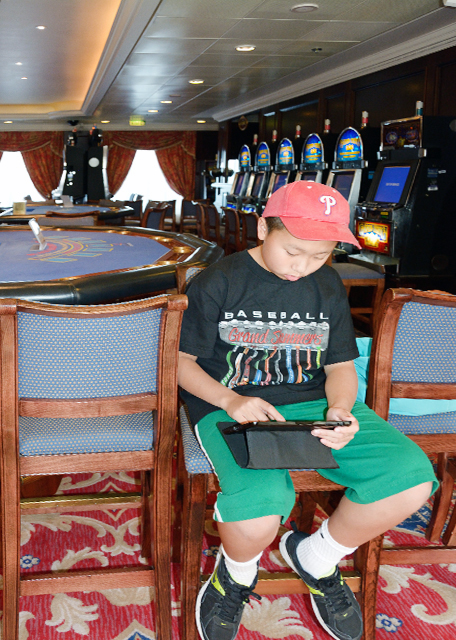
Casino of Nautica Oceania (“大洋·航海”号游轮——赌场 12-13-2013)  Fitness Ctr of Nautica Oceania Fitness Ctr of Nautica Oceania
(“大洋·航海”号游轮——健身中心 12-13-2013)  Treadmills of Nautica Oceania Treadmills of Nautica Oceania
(“大洋·航海”号游轮——跑步机 12-13-2013)  Galleria of Nautica Oceania Galleria of Nautica Oceania
(“大洋·航海”号游轮——画廊 12-13-2013) Crosslinks(相关博文): India(出游印度)
Across the Indian Ocean(穿越印度洋) |
